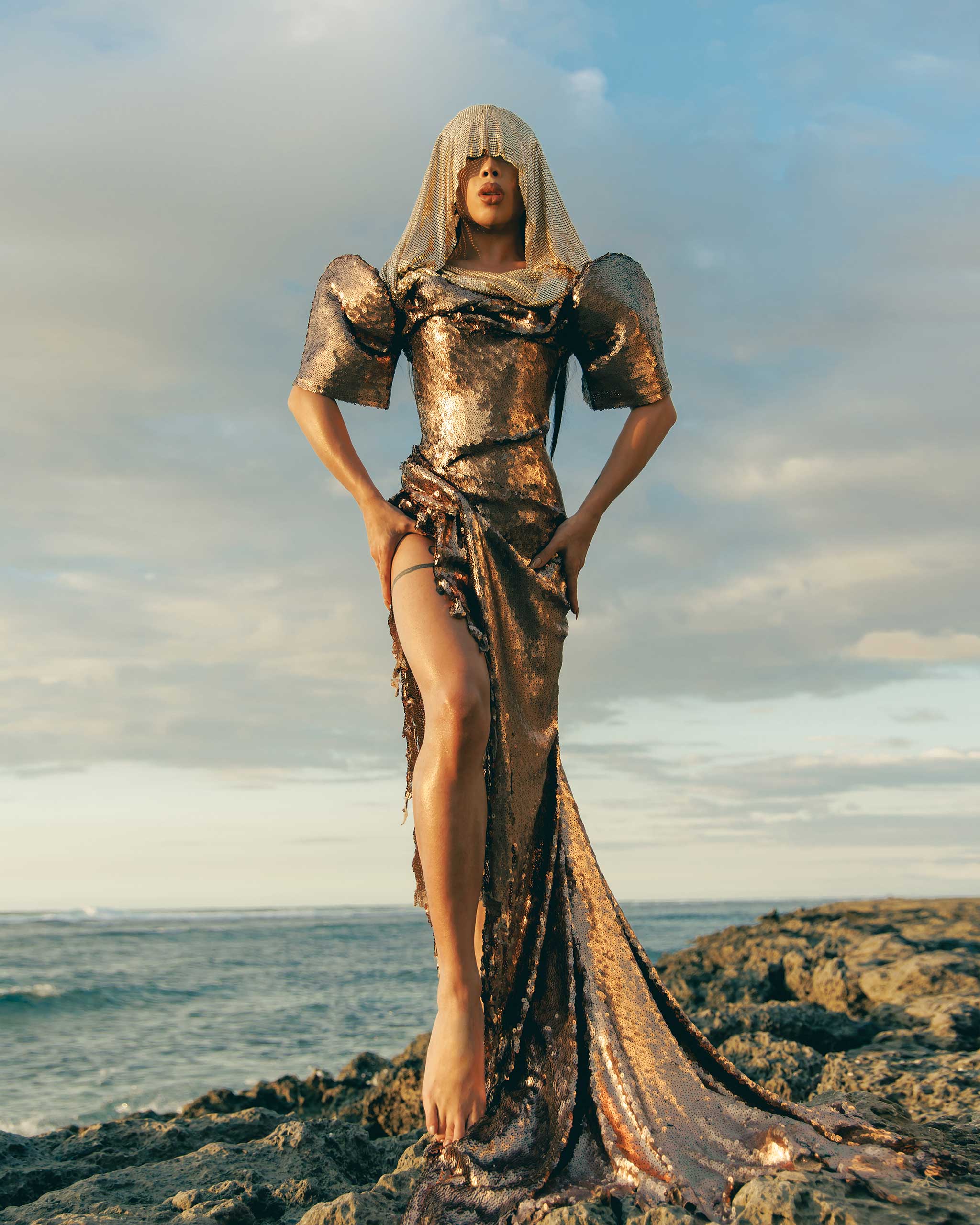Marina Summers wears an “off-balance” tightly corseted draped dress in bronze sequins by Jude Macasinag. Photo by Alan Segui. Courtesy of Jude Macasinag
For Marina Summers’s global debut on the Drag Race catwalk, designer Jude Macasinag approached a traditional Terno silhouette with a fresh perspective.
On the first episode of this season’s RuPaul’s Drag Race: UK vs. The World, the competing queens take their first step on a global main stage. When the world meets the Philippines’ representative Marina Summers, she is poised and statuesque, shrouded in gold chainmail and trailing bronze sequins. As she wielded a hefty bolo, light reflected off of crushed butterfly sleeves and a raw-edged hemline—details carefully considered by Jude Macasinag, the designer whom Marina lovingly calls “the future.”
The dress was conceptualized and constructed toward the end of 2022, when MEGA fashion director Ryuji Shiomitsu and Marina’s stylist Paul Sese tapped designer Jude Macasinag for the job. Admittedly, he had never worked in the world of drag before, but he tells Vogue Philippines that working with Marina—who knew what she wanted from the onset—was easy. “There were times wherein I would hesitate about doing something with the piece,” Jude says, “but I had the realization that I was working with someone who was equally as creative and as dedicated to their craft.”
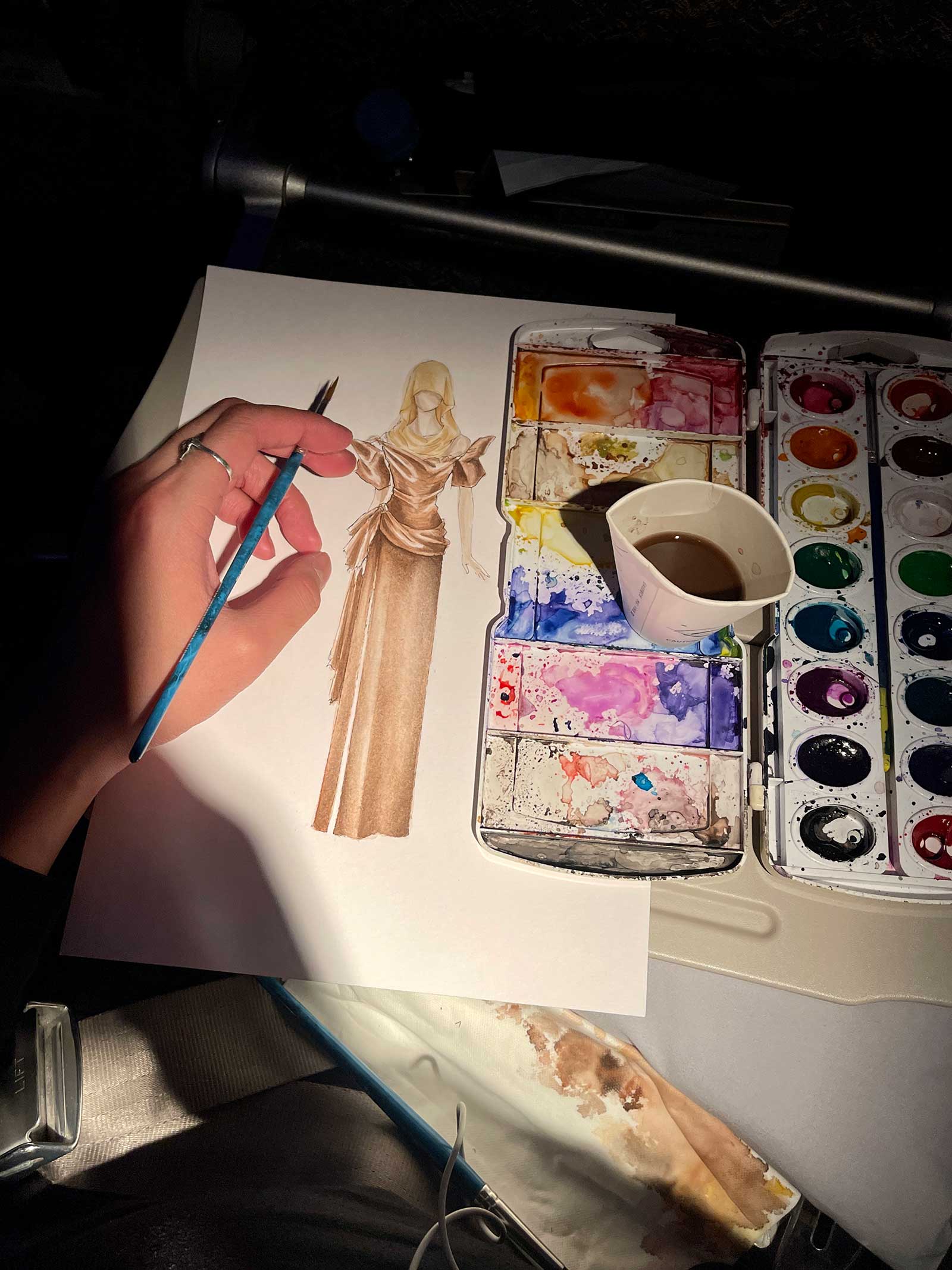
Ahead of the unveiling of his graduate collection at Paris Fashion Week, the designer reflects on the dress he made for Marina Summers and all that went into the design process. In an email conversation with Vogue Philippines, he talks about collaborating with Marina and her team, subverting traditional Filipino fashion codes, and crafting new narratives through the power of imagery.
Vogue Philippines: What was the exchange of ideas like between you and Marina?
Jude Macasinag: The idea of the Filipina warrior came from Marina and her team themselves, and my role in this project was to help actualize the idea. I knew I didn’t want to put out an overly ornate outfit with too many design elements for the sake of telling a story, so that idea of the Filipina warrior can be seen more via the styling of the piece.
I asked her and her stylist, Paul [Sese], for a deck that included more information about Marina’s creative universe—this includes imagery that she constantly references, performers that she liked, and so forth—which would be helpful for me in understanding Marina’s personality. This, for me, is an important step when making something for someone. They then also shared a styling deck [with] me which included a previous work of mine that I made for a local pageant.
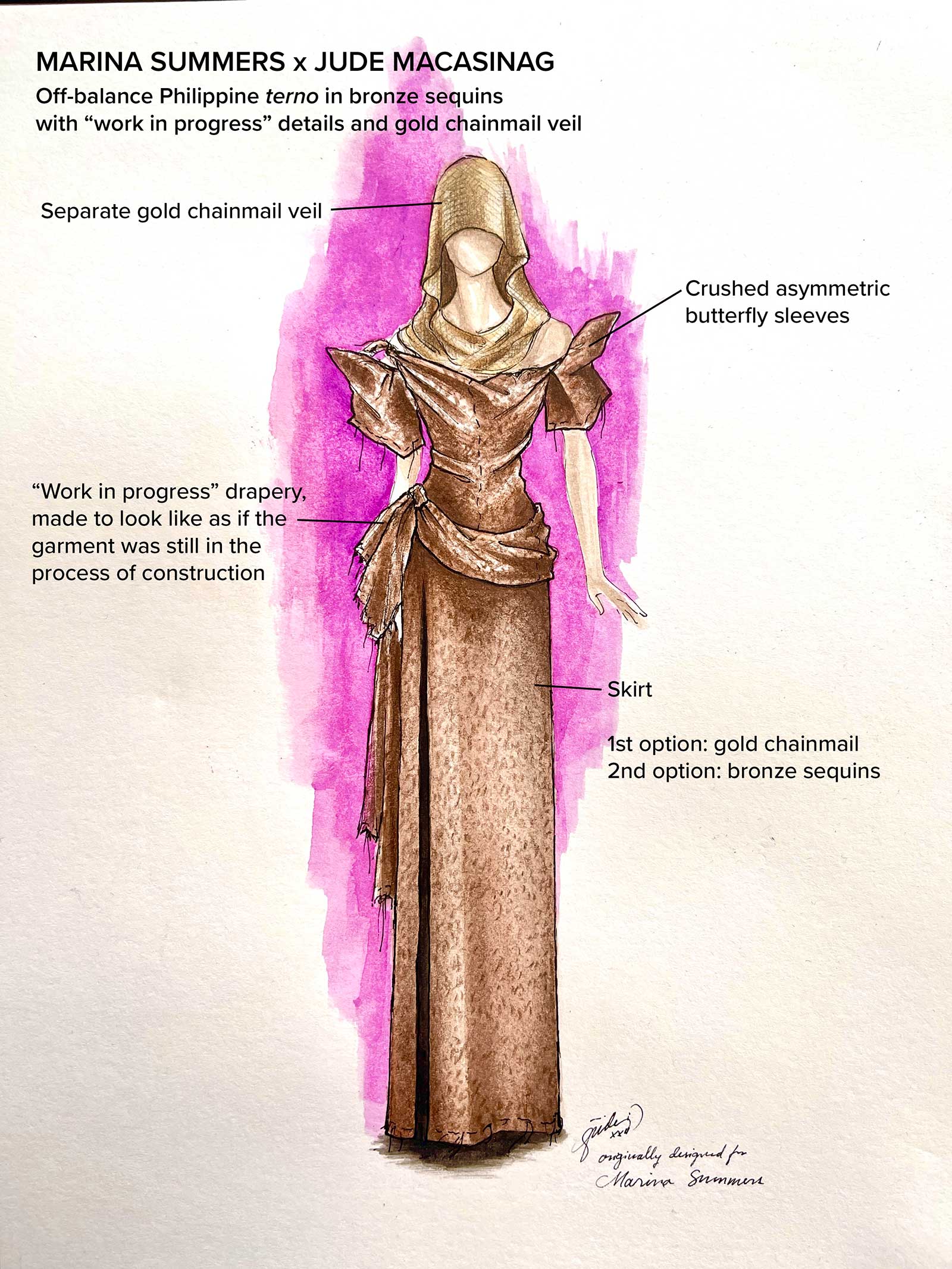
They gave me almost free reign after the brief, I sketched the piece on my flight back home to Manila during the holidays, and when we met up for the first time, we had a fitting session that played around with corsets and materials and whatnot, which then resulted to the design seen today. It was really an idea that was developed in collaboration.
When you shared the dress on Instagram, you wrote that you designed this dress around a time when you were exploring historical corsetry. Can you expand more on the influences that shaped your creativity?
At the time of making this piece, I was just starting out my Master’s studies and was under the direct mentorship of Olivier Theyskens. One of the pieces I was working on for school was a ballgown [that] utilized corsetry that I developed after doing historical research. In fact, some of the materials that Marina and I played with during our first fitting were bits and pieces of the said then project I was working on.
Prior to this development with Marina, I hadn’t been exploring drag that much. I had only watched through one season of Drag Race, and it wasn’t even the edition that included her. But I knew that in drag, there’s often the modification of the body as part of its creative language. I found it similar to fashion practices wherein the whole basis of the craft revolves around the human form. This basic understanding allowed me to see the project from the perspective of someone naive to drag, and I also rather took an approach that included historicism in the technique and practice. With this mindset, the project felt fresher and more natural.
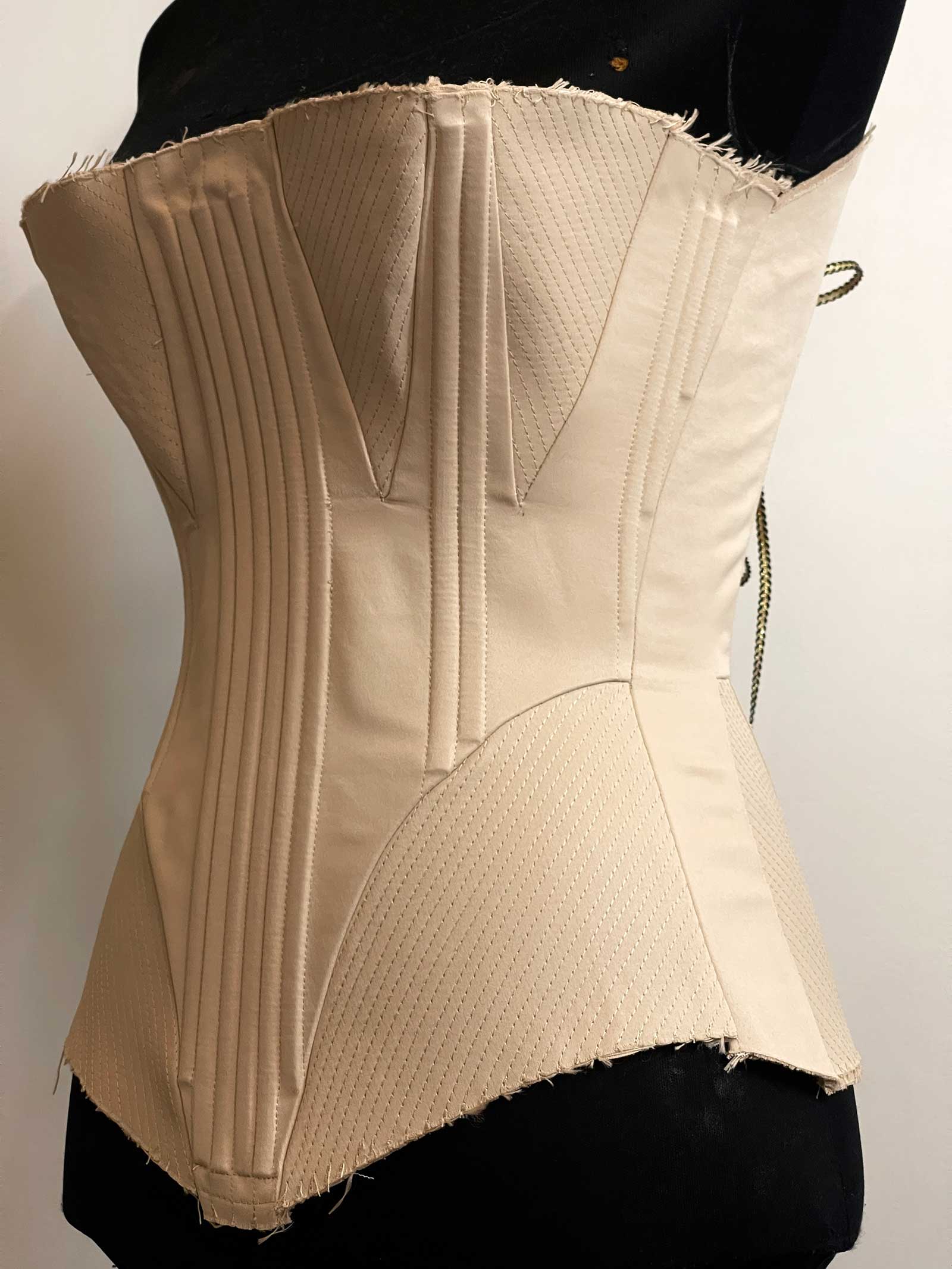

Tell me about your experience during the design process. What was it like working on this piece?
We did a first fitting almost as soon as I landed in Manila for the holidays, wherein, although I had a sketch, I remained open to spontaneity in such a collaborative process. It was also my first time meeting Marina and some of her team, so this was a fun and natural way of getting to know each other’s backgrounds and work. For me, play always has to be a part of the process.
There were times wherein I would hesitate about doing something with the piece, but I had the realization that I was working with someone who was equally as creative and as dedicated to their craft—[myself] in fashion, and Marina in drag and performance. So I quickly learned to allow creative liberties for everyone with the piece while maintaining some aspects that I felt were important to me as well. When working with someone as passionate, it’s crucial to be able to learn from them and understand how they work as well.
Were the crushed butterfly sleeves and “work in progress” details always a part of the initial design? Did they come about from instinct or building on your design signatures?
I wouldn’t put it out as a signature just yet since I’ve only made a handful of these Ternos with such sleeves, but perhaps it’s something I’m starting to build as a code.
The crushed butterfly sleeves started off simply as a design choice. Rigid and upright butterfly sleeves—although historically correct—for me, don’t always complement the wearer. Design is always a study of proportion, and when something as such is done solely by the book, it can sometimes just look stupid—pardon the frankness. So I like to play around with something that’s as traditionally coded and institutionalized as the form of the butterfly sleeves, simply just by crushing it. I like to set my Terno sleeves as far off of the shoulder and distort them at an angle which then creates a more flattering line that frames the décolletage and face of the wearer.
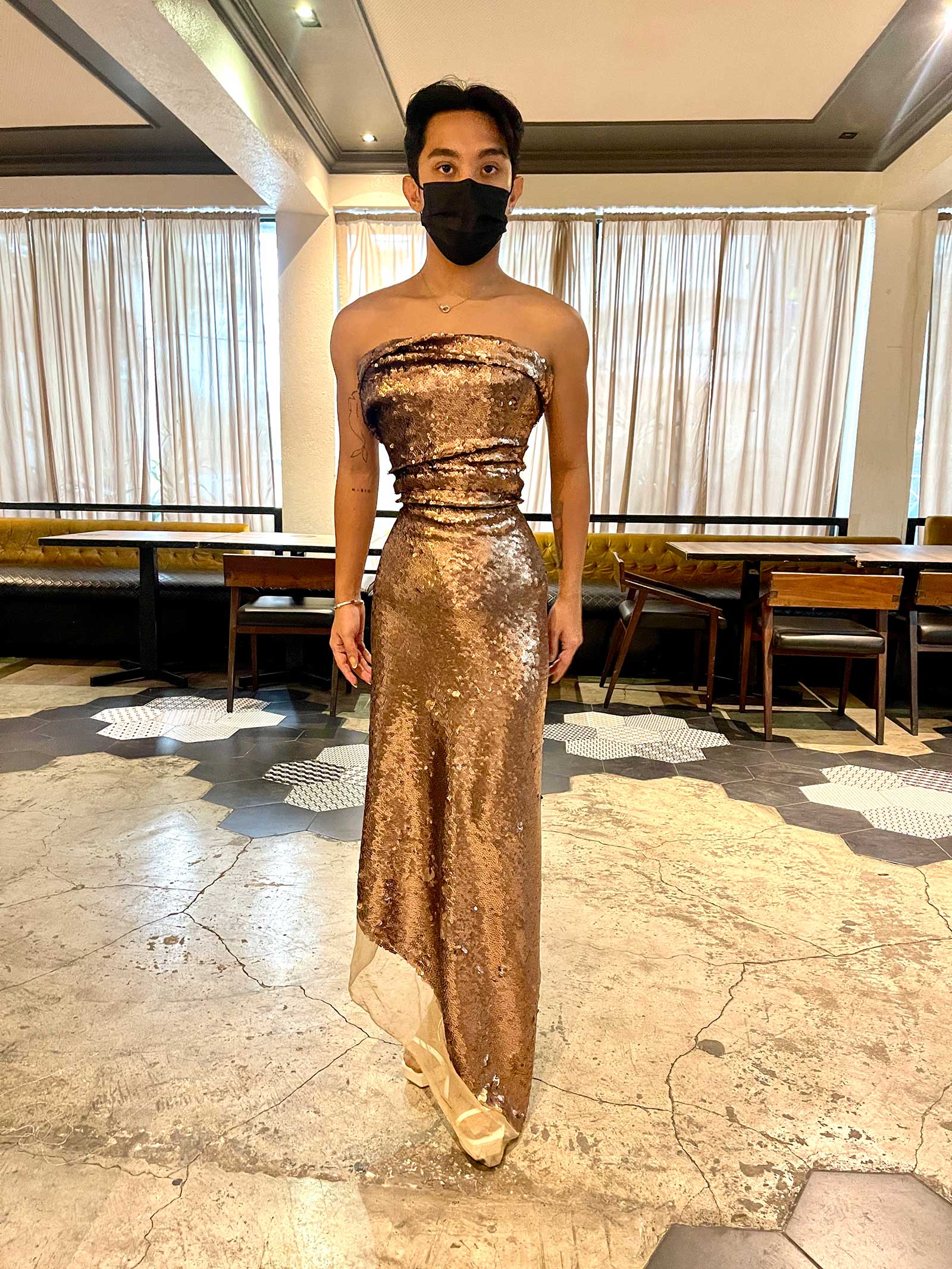
[From] a more abstract standpoint, the crushing of the butterfly sleeves can also be viewed as going against conventions. [As] mentioned, the historically accurate Terno sleeves’ rules are as rigid as the cañamazo material used to make them. Simply changing the shape is already an obvious act of rebellion. When Marina’s outfit was shown publicly, I immediately saw a comment, unfortunately from someone I knew, that called the crushed Terno sleeve poorly made and a design afterthought. This made me reflect on how the idea of the upright and rigid Terno sleeve; although sometimes beautiful, is representative of a design language that is as stuck-up, strict, and elite as its history. Transgression comes in different forms in our various creative crafts, and in mine, it came through a pleat on a sleeve.
Lastly, what was it like collaborating with Marina on this piece? How did you feel seeing Marina wearing your design on the Drag Race main stage?
It wasn’t about a sense of pride in having my work worn on such a televised platform, but I realized how important the project was for me only on the day that Marina’s first episode of Drag Race was aired. This realization didn’t come from the material result or with the nationalistic suggestions within it. It came in the process of understanding and observing the immense value of drag in today’s culture, especially in the Philippines. In a way, Marina Summers opened up drag for me by allowing me to see the more personal side of it.

I’ve always talked about how one of fashion’s greatest abilities is not just in making beautifully crafted garments but also in creating narratives via the power of imagery. Drag is an equivalent of that. Beyond reshaping the physicality of the body and face in which one creates an extension or counter of oneself, it is another way of curating characters and stories and thus connecting to a community. Drag comes from the self but is not selfish.
And especially in the Philippines, wherein queerness is still being persecuted, unfortunately, with conservatism and religiousness at its roots, drag becomes an even stronger form of transgression. It is probably one of the most important and revolutionary art forms of our time. And being opened up to a whole new field of performance and meaning-making, at the same time, meeting such talented individuals like Marina, who are at the forefront of it, is what made this outfit and project a little bit more special.
